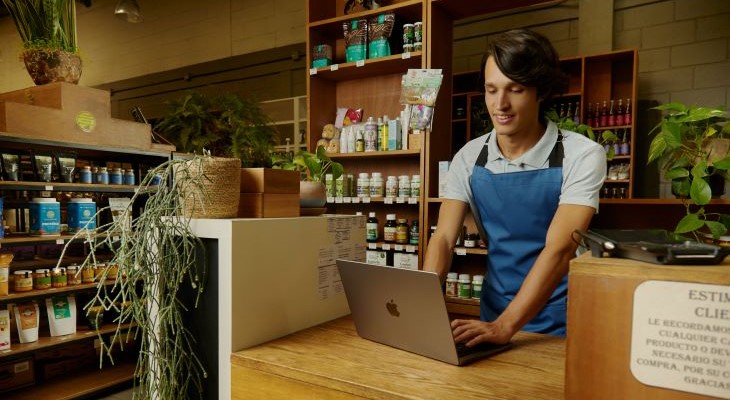Saving time, quality and health, but also convenience: these are the factors that are driving the advance of the “Grocerants”, i.e. restaurants, refreshment areas and bars opened inside a supermarket (Grocery stores, hence the “mishmash word”). A trend which in countries such as Canada, the US and the UK is booming. And which is much appreciated by Millennials: foodies, in a hurry and often skipping meals just to keep up with their social or business commitments, and who appreciate stores able to have a “holistic approach” to food. Above all, they appreciate the opportunity to save time by having a bite while shopping.
The latest confirmation comes from John Lewis, a British high-end store, which has decided to introduce another ten Rossopomodoro restaurants (in the picture the last opened in London) and Joe & the Juice cafés within the next year in its stores in the UK. The two chains are also present with temporary premises on the summer terrace of the John Lewis flagship store in Oxford Street in London, which already has two Ham Holy Burger and Rossopomodoro restaurants.
According to Carman Allison, VP of Nielsen Consumer Insights, the presence of fresh and healthy ingredients is one of the keys to success, along with a diversified offer designed to meet the tastes of increasingly demanding and curious foodie customers. “Supermarket sales are static and people tend to spend more on eating out. Retailers are trying to intercept this market”.
The ideal offer is that which includes fresh food, sushi and salads, but the more savvy retailers are starting to “create environments”, perhaps with a “fireplace corner” that makes customers feel like they are “in a restaurant”, but also lets them just drink a glass of wine or a beer as an aperitif, as already happens at Eataly Smeraldo.
The strategies are different: the store can sign a partnership with veritable chains which are already structured, as John Lewis did with Rossopomodoro, but also “supply” the catering area with the offer of the store, for example by offering a sushi at the fish counter or even cooking the fish purchased by the customer who can sit down and eat on site. Multifunctional areas are on the rise, such as the new Sapori&Dintorni in Naples which, in the Gourmeet area, works alongside a bistro and “Bombe”, a restaurant designed by the Michelin three-star chef Niko Romito and managed by the students of his cooking school, where you can buy its famous street food.












